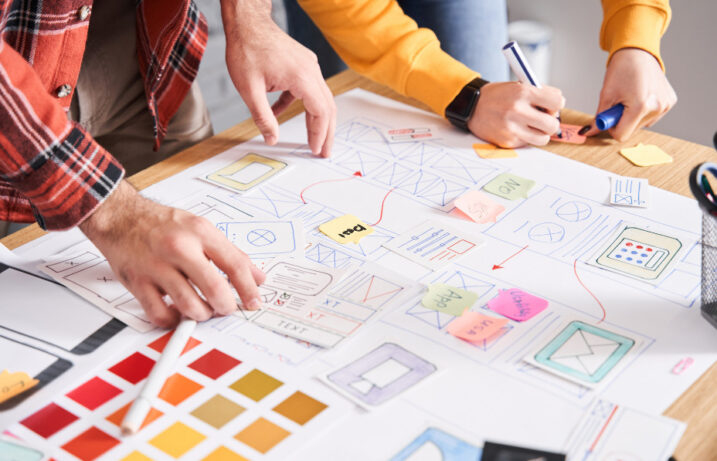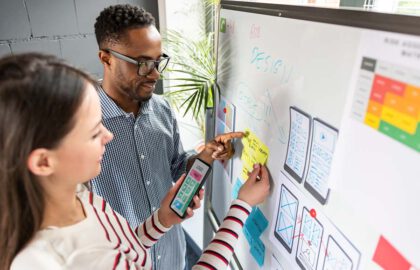The term “user experience” has been around since the ‘90s. It was coined by Don Norman, a cognitive scientist at Apple, back before Apple became the household name it is today. He focused heavily on user-centered design, which placed the user at the front of the product design process. While “user-friendly” is a term you probably know well, it wasn’t all that popular at the time.
Put quite simply, user experience design is the process of planning the experience a person has when they interact with a product.
UX design focuses on the interaction that a human user has with everyday products and services. The goal of UX design is to make using these products and services, both digital or physical, easy, logical, and fun.
Designing Around The User
So, let’s start at the beginning: the “U” in UX. Why?
As Apple founder Steve Jobs aptly put it, “You’ve got to start with the customer experience and work back toward the technology – not the other way around.”
The user is the person who is going to live, eat, and breathe your products. It’s your job as a UX designer to give them an enjoyable, useful experience.
But first, you have to know who they are. Designing a user persona (which is done by a UX researcher, whose role is more back-end and data-based) lets us come up with an ideal user and examine their desires, wants, and frustrations with current solutions.
The bottom line: You have to know who your user is to make something that works well for them.
By placing the user persona at the forefront of the design process, we ensure that we eliminate the user’s pain points and ensure a user-friendly product that they will rave about for years to come (or until you come up with a newer and better version).
Once we’ve established a user persona, the job of a UX designer and his or her team is to think through every step of a user’s journey with the product. All parts of that journey should be memorable and add value to the user. Understanding the target user and the user journey allows designers to delight customers at every stage.
A Sample User Experience
As an example of a great user experience, let’s look at Matt’s user journey with Carvana, a popular website used to sell and buy used cars.
Matt is looking for a new car. He’s tired of haggling with salesmen at the car dealership when he sees an ad for Carvana, the car vending machine. He heads over to Carvana’s website. Excited, he saves a few cars to his wishlist.
Still a little uncertain, he chats with a salesperson at Carvana and then with an acquaintance who recently used Carvana. Feeling ready, Matt finally chooses a car and puts in his payment details. A week later, his shiny new vehicle shows up on his doorstep. This is no doubt the best car-buying experience Matt has ever had!
In this example, it’s clear that Carvana put Matt at the center of their business.
They figured out who their target user is (Matt and people like him) and their pain point (hates haggling at the dealership). Then, they thought through every step of Matt’s buying journey in order to make the entire product easy to use, incredibly useful, and downright magical.
This is the definition of good user design — to make products that are useful, usable, and desirable.
Make Magic With Product Design
User experience is just one part of Product Design – the overarching concept that combines UX and UI to craft user-centered digital experiences. For those in this field, the digital world is a veritable sandbox where the limits are naught but your imagination.
Apply Today to take the first step on your path to a career in Product Design.
If you’re not quite ready to apply, try out the curriculum with our Free Product Design Prep or check out the Product Design Course Syllabus that will set you up for success.




